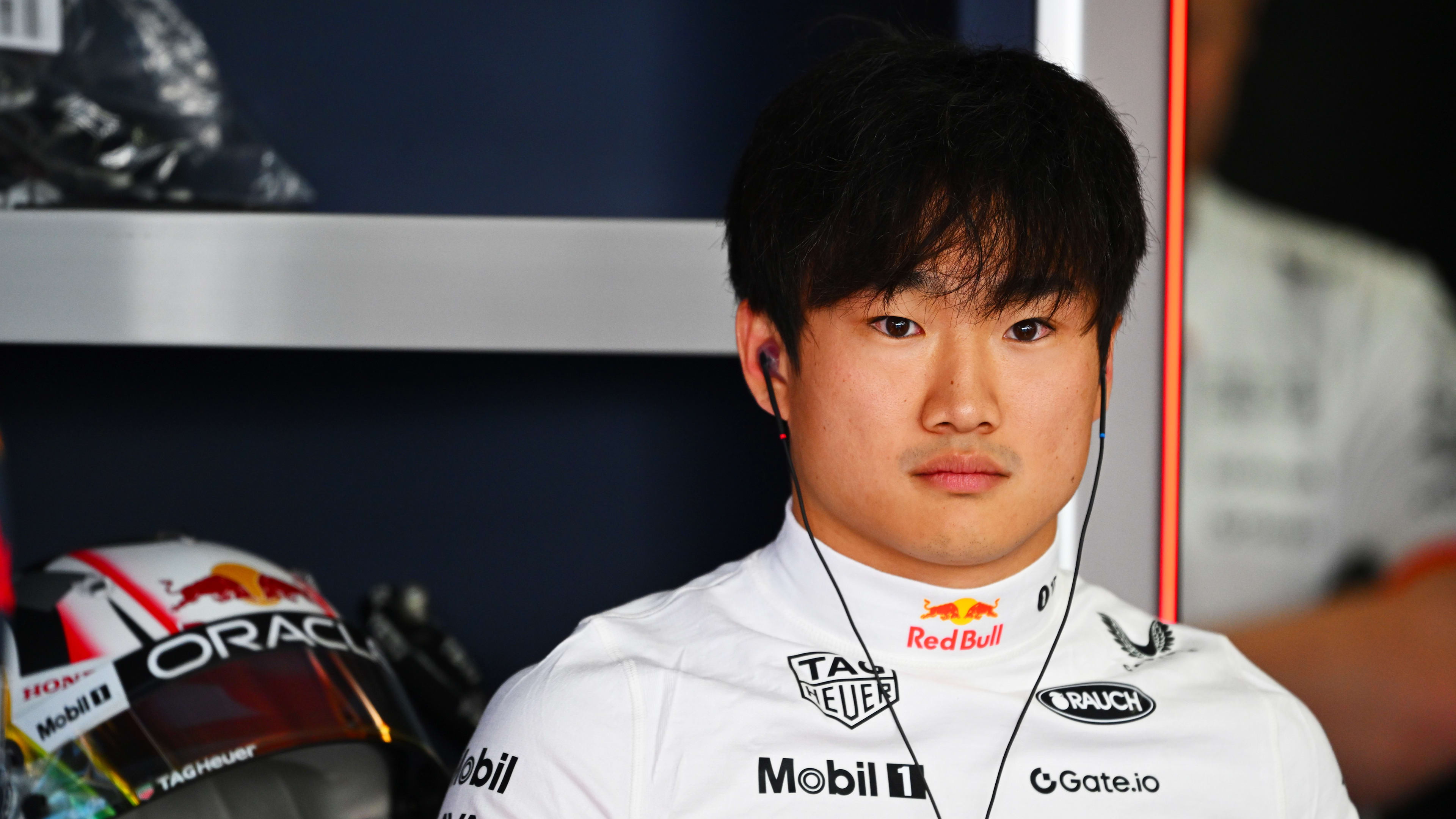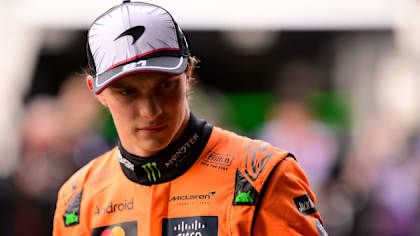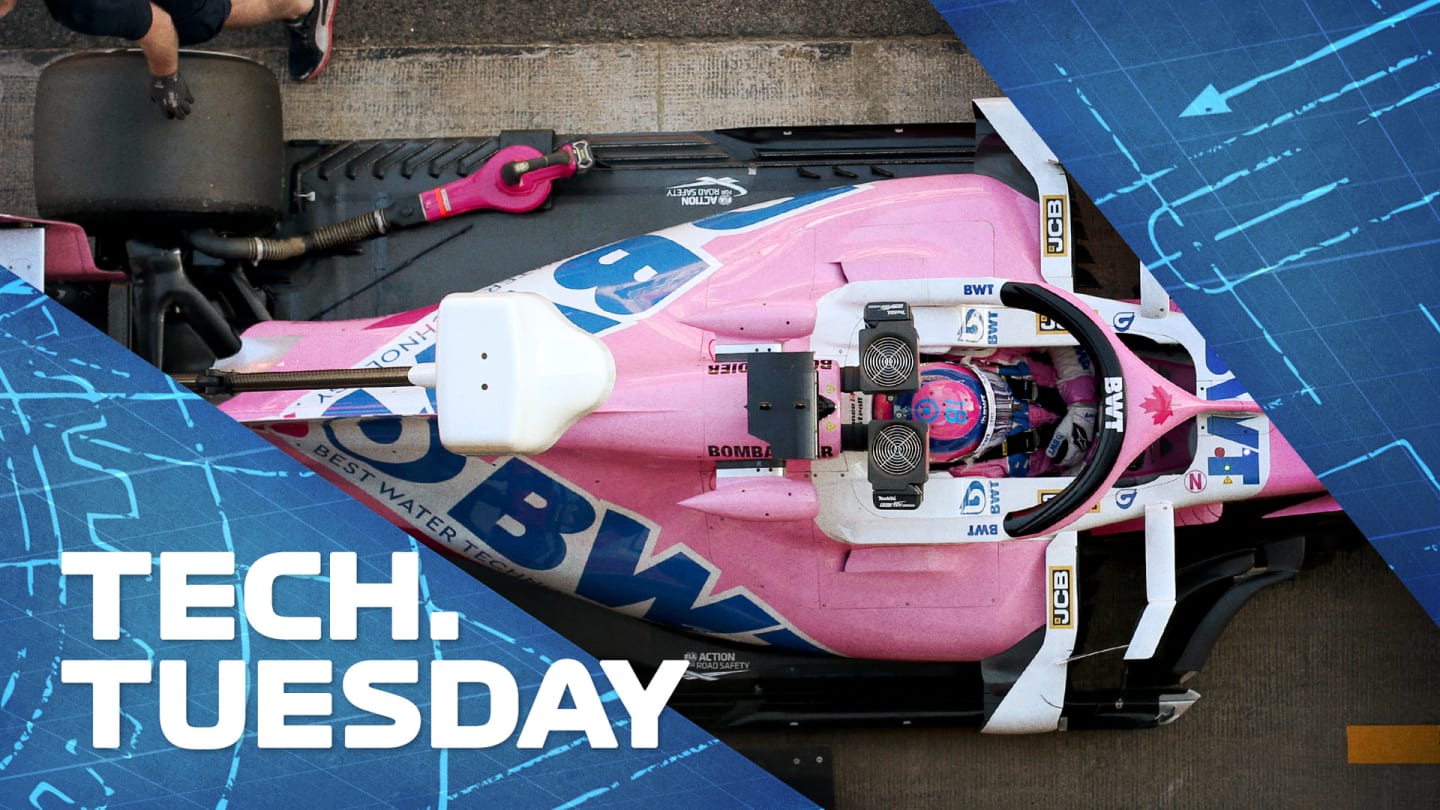
Technical
What does the 2021 aero rules change mean for the cars – and which teams will it hurt most?

Share

Although Formula 1's all-new aerodynamic regulations have been postponed for a year to 2022, there is still set to be a significant aerodynamic change to the cars next season, with the FIA announcing last week changes to the outer floor area designed to trim downforce levels. But why have the rules been changed and what difference will it make to the teams? Technical expert Mark Hughes explains all in the latest Tech Tuesday...
READ MORE: The key performance area being closed off as F1 trims 2021 downforce levels
Currently the floor is permitted to run in a straight line from an area adjacent to the cockpit back to a point ahead of the rear tyre. From next year however, that point ahead of the tyre must be 10cm further inboard, so making the floor edge a diagonal line when viewed from above.
This will trim a significant area of floor away from the car. How much will depend upon the car’s wheelbase. The downforce generated by the underfloor is a multiplication of the floor’s area with the negative air pressure being generated there.
WATCH: F1's new 2021 rule changes: Five key things you need to know
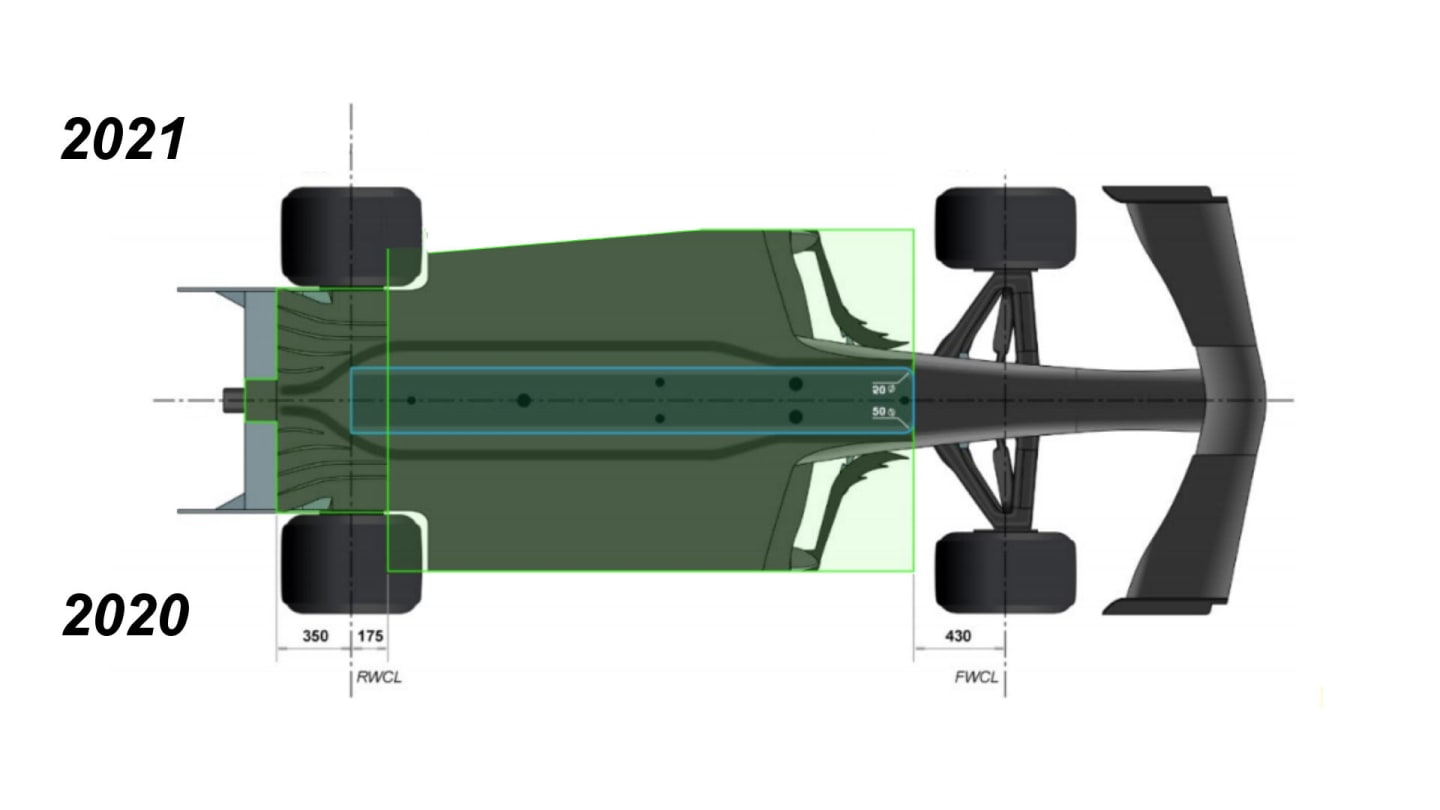
A comparison showing how dimensions will change when the 2021 floor regulations come into play
The changes to the floor do not stop there. The current ‘tyre squirt’ lateral slots in the floor that feature ahead of the tyres on all the cars are banned as of next year – as are the longitudinal slats that run down the outer edges of the floor from front to back. That whole outer floor area must be solid.
The purpose of the two sets of slots are quite different, but both contribute significant downforce performance. Combined with the reduction in floor area, these changes are expected to add around 0.5s of lap time.
READ MORE: TECH TUESDAY – How Mercedes' 2020 car tackles the W10's biggest weakness
The tyre squirt slots are there to release the excess air pressure induced around the edges of the floor caused by the rotating tyre. As the air moved by the tyre meets with the air travelling down the underfloor on its way to the diffuser, it creates a bow wave effect.
This corrupts the airflow being fed into the diffuser, which in turn limits how well the diffuser can scavenge the whole underbody. Anything which reduces the overall speed of the underbody airflow reduces downforce.
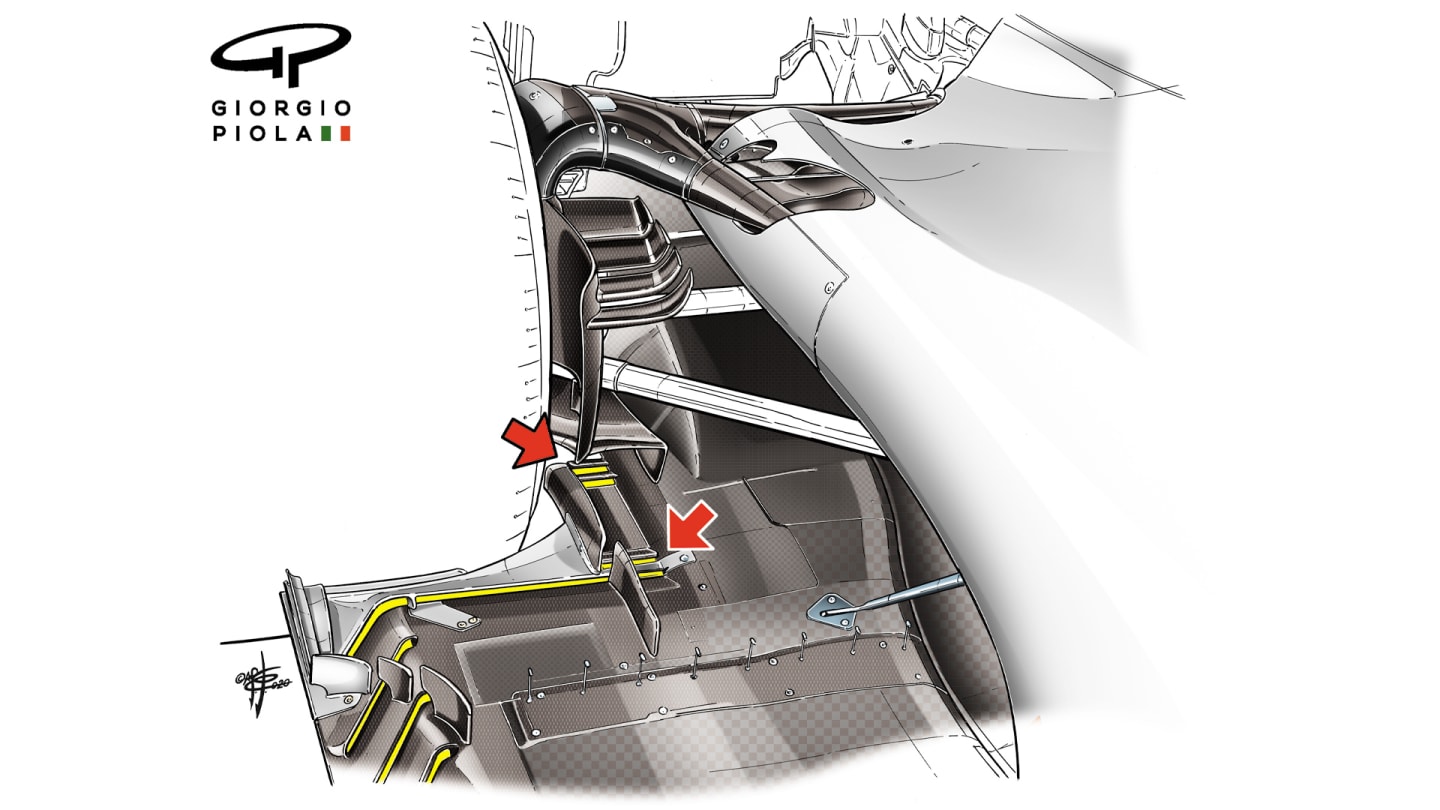
The arrangement on the Haas VF20 shows the detail just ahead of the tyre on the floor of the car
So these lateral slots just ahead of the tyre have become very fashionable, as they give the air squirted by the tyre somewhere else to go, thereby keeping the flow to the diffuser relatively clean and consistent. They are an area of constant detail development and have become increasingly sophisticated, as evidenced by the very intricate arrangement seen on the current Haas VF20 (seen in the image above).
The longitudinal slats down the outer sides of the floor that became increasingly common and intricate last year are there to form vortices beneath – effectively sealing the outboard end of the floor to form a virtual skirt, thereby preventing the airflow travelling beneath the floor from leaking out the sides. This helps to maximise the air pressure difference between the underfloor and the air outside.
READ MORE: Exploring the suspension layouts that could give Mercedes and Red Bull the edge
Aerodynamicists will no longer be able to rely on these two slot tools to enhance the aerodynamic performance of the underfloor as they adapt their existing 2020 chassis to the tweaked ’21 regulations. They will however, still be permitted to develop wings, sidepods and diffusers and so will be able to mitigate the effect of the changes.
The changes have been made in anticipation of the downforce of the cars being increased through normal development. It was felt that the current tyres – which were originally due to be replaced by the 18-inch tyres for the now-postponed all-new regulations – were at the upper end of their ability to withstand the aerodynamic loads.
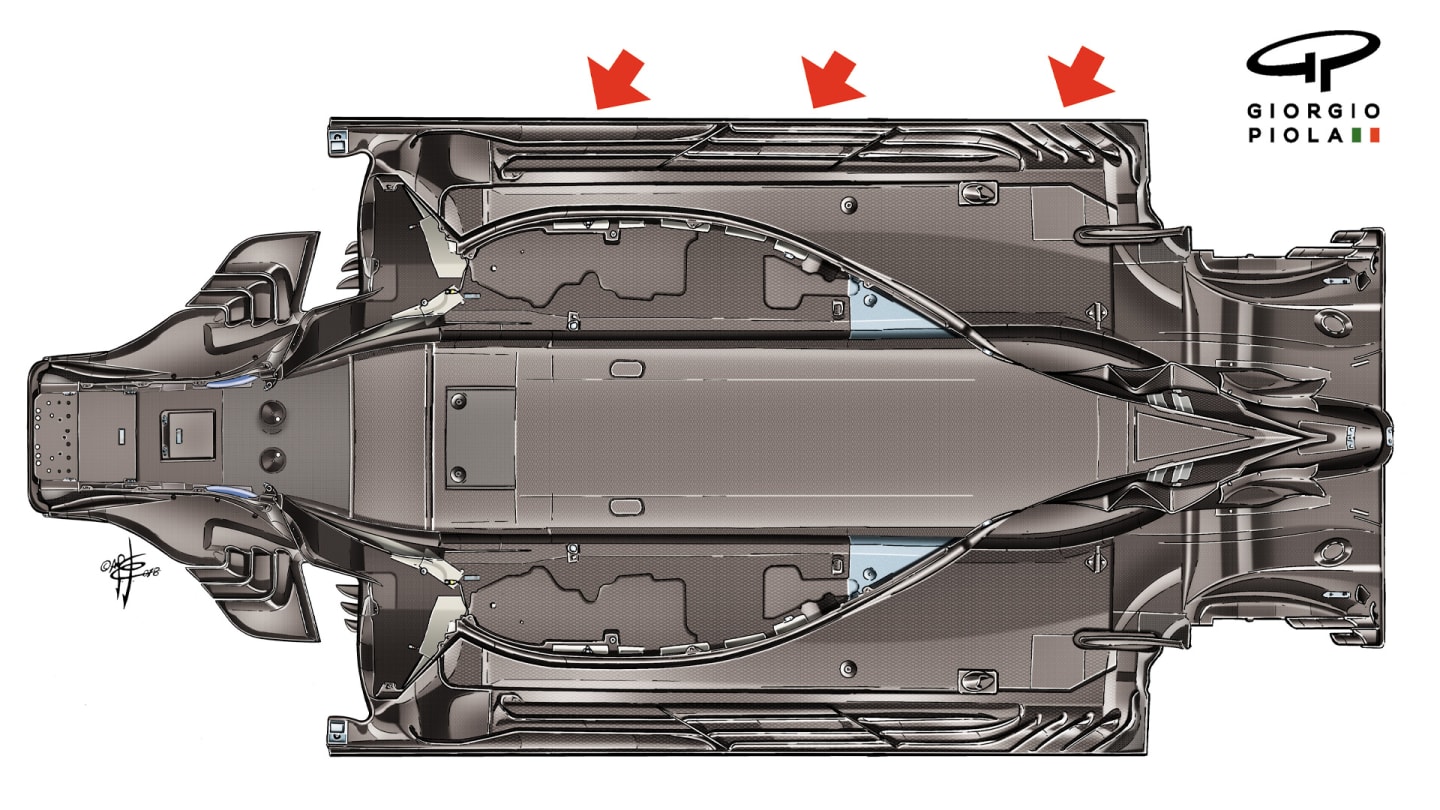
A drawing of Ferrari's floor showing the longitudinal slats on the outer sides of the floor
Reducing the downforce, especially through the fast corners (downforce squares with speed), was felt to be necessary to keep the tyres within their designed operating limits.
The alternative of reducing the rear wing area was modelled but found to be less satisfactory. The problem is that the downforce created by the wide body cars introduced in 2017 is so great there are corners that can be taken comfortably flat-out and for which reducing the rear wing would simply make the approach speed even higher, but still with the corner flat out.
READ MORE: FIA approve reduced 2021 F1 cost cap and new sliding scale rules for aero testing
So any reduction in load induced by the smaller wing would be overcome by the increase in load induced by the increased speed working the wing harder.
So, how might the changes be expected to impact upon the various car designs? Ultimately, the teams will engineer around the limitations and find ways of clawing back what has been taken away – as always.
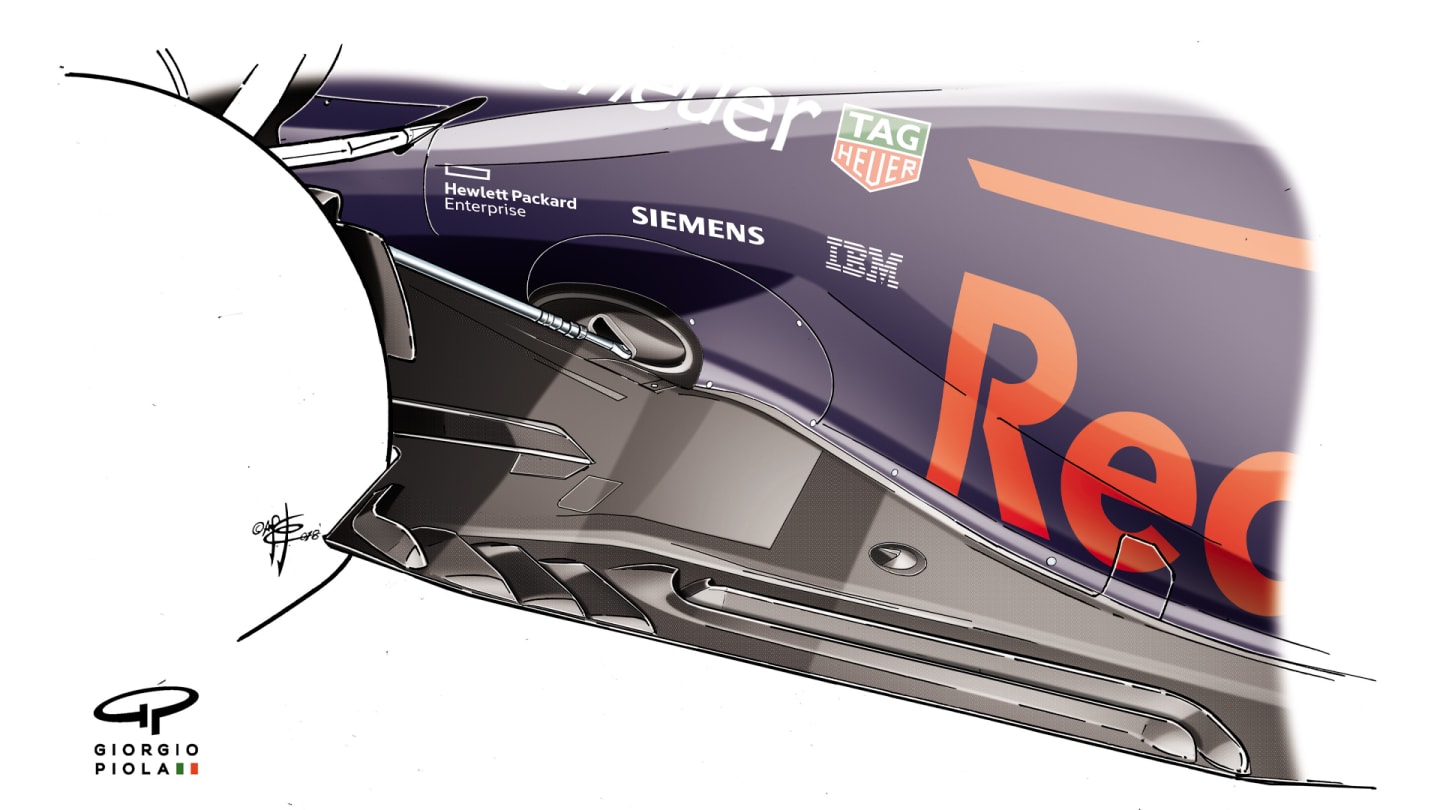
Teams such as Red Bull might have more work to do with a high-rake philosophy less suited to the new-spec floors
But the initial effect, as the teams put these new spec floors in simulation, might be expected to have more impact upon the high-rake cars (such as the Red Bull and others) than those optimised around a low rake angle (such as the Mercedes and Racing Point).
Remembering that the underfloor downforce is a product of the floor area and the negative air pressure, the low-rake designs tend to have longer floors to compensate for the fact that their flatter angle to the ground does not generate as much negative pressure per square inch. Taking away the floor-sealing slots will reduce just how much negative pressure can be induced from the underfloor.
As ever, the race will be on to see who can adapt the quickest to the revised requirements when 2021 comes around.
More on the 2021 regulations
- F1's new 2021 rule changes: Five key things you need to know
- New F1 rules ‘will definitely allow us to compete’ with top three teams, say Racing Point
- The 2021 F1 cost cap explained – what has changed, and why?
- FIA approve reduced 2021 F1 cost cap and new sliding scale rules for aero testing
- How F1's new sliding scale aero testing rules work – and what impact they will have on racing
YOU MIGHT ALSO LIKE
News DRIVER OF THE DAY: Tsunoda's your star in first Red Bull outing on home soil
News Piastri insists pace in Japan was ‘mega’ as he explains McLaren’s ‘fair’ response in battle with Norris
News Sainz hit with three-place grid penalty over Hamilton incident during Japanese GP Qualifying

Video RACE START: Watch the getaway in Japan as Verstappen holds onto the lead while Alonso battles with Gasly
